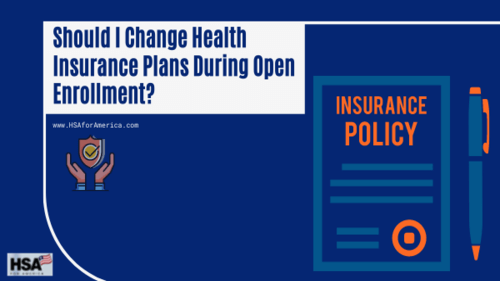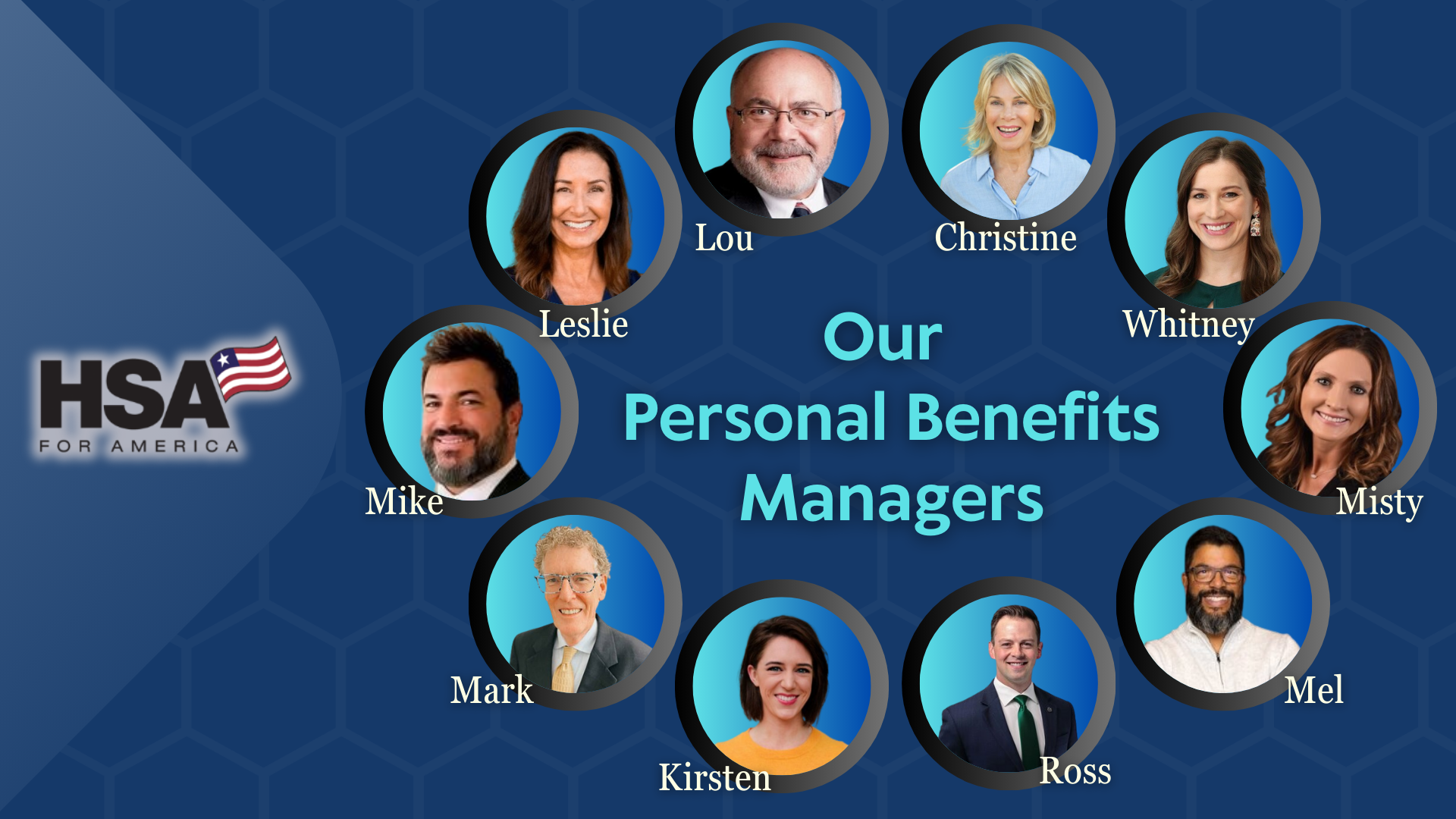The annual Open Enrollment period for 2025 will begin by November 1st, 2024.

This is your chance to sign up for a new health insurance plan or make changes to your existing one. It’s also the only time you can switch plans outside of a qualifying life event.
This article will show you all you need to know about Open Enrollment periods and how to make the most of them.
What is Open Enrollment?
Open enrollment season is a designated period each year when individuals can enroll in a health insurance plan, make changes to their existing plan, or cancel their coverage.
This period typically applies to employer-sponsored health insurance, government programs like Medicare and the Affordable Care Act (ACA) marketplace, and individual plans purchased directly from insurers.
In addition, new expanded federal subsidies are making health insurance plans more affordable for almost everyone. If you’ve been denied a subsidy in the past because of your income, there’s a very good chance that you now qualify.
Ready to start comparing rates? Click here to run a free health insurance quote for your area. Looking to save some time? Click here to get a no-cost consultation with a Personal Benefits Manager, and find the coverage you need in minutes.
Key Features of Open Enrollment
1. Time-Sensitive: Open enrollment periods are specific and usually occur once a year.
Missing this window generally means you cannot make changes to your health insurance plan until the next open enrollment period unless you qualify for a special enrollment period due to certain life events (e.g., marriage, birth of a child, loss of other coverage). We will discuss further on this later in this article.
2. Coverage Choices: During open enrollment, individuals can compare different plans and choose the one that best fits their health needs and financial situation.
This can include selecting between different levels of coverage, such as high-deductible plans, HMOs, PPOs, etc.
3. Plan Changes: This is the time to adjust your current plan if it no longer meets your needs.
For instance, you might want to change to a plan with a different network of doctors or better prescription coverage.
4. Employer-Sponsored Plans: For those with employer-sponsored insurance, open enrollment is typically the only time to change plans or add dependents without a qualifying event.
Checklist: How to Know if it’s Time to Switch Insurance Plans
Choosing the right benefits package can make a big difference in your financial well-being and peace of mind.
Not everyone needs to change plans during Open Enrollment. But if you are currently uninsured or looking to reduce your monthly costs, Open Enrollment is the time to do it.
Here’s a guide to help you determine whether or not it’s a good time to switch plans.
Review Last Year’s Usage
Take a look at how you used your benefits last year.
Did you go to the doctor often? Did you use all your dental benefits? Understanding your past usage can help you anticipate your needs for the upcoming year.
Clarify Your Health Insurance Goals
Whether you need to lower your monthly premium or just don’t like your insurance company, it’s important to know what you want out of an insurance plan.
Check for Changes in Your Current Insurance Plan
Just because you’re happy with your current plan doesn’t mean that you’re not overpaying.
Rates change all the time, and it’s easy to not notice. The good news is: there’s almost always a more affordable plan available, even with comparable coverage.
Evaluate the costs and coverage of each benefit option. Look beyond just the monthly premium – consider deductibles, copayments, and coinsurance. Make sure the benefits you select offer the right balance of coverage and affordability for your needs.
Life Changes
Have there been any significant life changes since the last enrollment period?
Marriage, divorce, a new baby, or a dependent aging out of coverage can all impact your benefit needs. Make sure your coverage reflects your current life situation.
Did Your Current Doctor Stop Accepting Your Insurance?
Medical providers often change the health insurance plans that they work with.
While it’s not very common, there’s a chance that your doctor will not be accepting your current health insurance company for 2025.
If this is the case, you can either choose a doctor that is still within your network, or use Open Enrollment to sign up for a new plan.
Check Whether Your Prescriptions Are Still Covered
From time to time, health insurance companies will modify the list of prescription drugs covered under a specific plan. (This list is called a Formulary). They can also modify how much of a specific prescription drug is covered.
If your plan’s formulary is changing for 2025, then you should have received a notice by mail. If you didn’t get a notice or are still unsure, call your plan’s member assistance line.
Is Your Plan Still Being Offered in Your Area in 2025?
Most major health insurance companies will make certain changes to their coverage areas from year to year. If your plan is going away, your health insurance company will automatically enroll you in a similar plan, but your costs could change.
Pro Tip: Most health insurance companies are expecting to increase their coverage areas in 2025. This means that there could be some new plans in your area that weren’t available for 2024.
Find Out How Much Your Expanded Subsidy is Worth
Under the American Rescue Plan, the federal health insurance subsidy has increased for a significant number of people. This includes individuals and families who earn more than 400% of the Federal Poverty Level (FPL). (Previously, this income level was disqualifying for subsidies).
Even people who already qualified for a subsidy can receive these extra savings in 2025.
Consider All the Alternatives to Health Insurance
Even with a bigger subsidy, some insurance plans are still too expensive to be viable. It’s even worse for people who are pretty healthy and don’t use their coverage very much.
By considering these factors before open enrollment, you can make informed decisions that will best meet your needs and protect your health and financial well-being.
Never miss an Open Enrollment deadline again: Subscribe to the HSA for America’s Monthly Newsletter.
Compare Pricing on the Best Insurance Plans Available
Alternatives to Health Insurance
If health insurance just isn’t working out for you, you’ve still got other options to take the best care of your health.
-
Medical Cost Sharing Plans
Also known as Healthshare, these low-cost healthcare programs can keep you protected against emergency or unexpected medical costs.
Unlike health insurance, you’re not paying for coverage that you’re not using. In addition, healthshare plans have no enrollment periods, making it possible to sign up any time of year.
Learn More: Health Share Plans
-
Direct Primary Care (DPC)
DPC is a membership-style healthcare program. Members pay a monthly fee to their doctor, and in exchange, they can get as much primary care as they need.
These primary care visits will not only keep you healthy but also help catch any potential health issues before they get worse.
Learn More: The Complete Guide to Direct Primary Care (DPC)
-
Healthshare Plan + Direct Primary Care
Health Sharing and DPC can be combined into a health strategy that includes both preventive care and emergency cost sharing.
MPB Health offers a healthshare plan that is designed to work directly with an existing DPC membership. Even together, this option is more affordable than many insurance plans.
Learn More: HSA SECURE Plan
Key Facts: Health Insurance Open Enrollment 2025
Health Insurance Open Enrollment begins on November 1st and goes through December 15th. A number of states have already extended the deadline to January 15th or later.
Open Enrollment is the only time of year to sign up for a marketplace plan or switch from one plan to another.
Expanded federal subsidies mean that health insurance premiums are lower for most people. This includes individuals and families who earn more than 400% FPL, a group that used to not qualify for subsidies.
The most common reasons to switch plans are to find a lower premium, get a different provider network, or change the plan’s annual deductible.
Traditional health insurance is not the only option. Versatile, creative solutions like Direct Primary Care and Health Sharing Plans can provide critical health protection at a fraction of the cost.
When is Health Insurance Open Enrollment? [State by State Deadlines]
The 2025 Health Insurance Open Enrollment Deadline is January 15th. But as of the date of publication, 11 U.S. states have extended this deadline.
States with Extended Open Enrollment 2025:
- California: November 1 to January 31, 2025 (renewals begin October 1)
- District of Columbia OEP: November 1 2024 to January 31, 2025 (uninsured residents can enroll anytime through the end of the COVID public health emergency)
- Idaho: November 1, 2024 through December 15, 2024.
- Massachusetts: November 1, 2024 through January 23, 2025
- Washington: November 1 through January 31, 2024 (*In Washington, DC, residents can have coverage effective immediately. For example, if residents sign up by June 30, they can choose for their coverage to begin on either June 1 or July 1.)
- New Jersey: November 1 to January 31, 2025
- New York: November 16 to January 31 (enrollment starts later; enrollment also open throughout COVID public health emergency)
- Rhode Island: November 1 through January 31, 2025
Never miss an Open Enrollment deadline again: Subscribe to the HSA for America’s Monthly Newsletter here.
Special Enrollment Periods: What You Need To Know
Open Enrollment is normally the only time of year to sign up for a health insurance plan. But if you qualify for a Special Enrollment Period, then it is possible to enroll outside of Open Enrollment.
In order to qualify for a health insurance Special Enrollment Period, there must be a qualifying life event.
These 4 qualifying life events are:
1. If You Lose Your Coverage.
This can include turning 26, losing your job, or no longer being eligible for Medicaid / Medicare.
2. If There are Changes in Your Household.
Getting married or divorced, having or adopting a child, or having a death in the family can qualify you for a Special Enrollment Period.
3. If You Move.
If you move to a different county or zip code, you might not be able to keep your current plan and will be given the opportunity to enroll in a new one.
4. Other Changes.
There are several less-common life events that can qualify someone for a Special Enrollment Period, including:
- Becoming a U.S. Citizen
- Getting out of prison or incarceration
- Joining or leaving AmeriCorps
- Gaining membership in a tribe recognized by the Alaska Native Claims Settlement Act (ANSCA).
Compare Pricing on the Best HealthShare Plans Available
Health Insurance Open Enrollment 2025: Frequently Asked Questions [F.A.Q.]
Q: Should I Switch Health Insurance Plans During Open Enrollment?
A: If you need to lower your premium or increase your coverage, then switching plans is a good idea. By making plan changes through your Personal Benefits Manager, you can be certain that you’re getting the best rates possible.
Q: Can I Change Health Insurance Plans Mid-Year?
A: The only way to change health insurance plans mid-year, or outside of Open Enrollment, is to qualify for a Special Enrollment Period. The section above details the different life events that can qualify you for a Special Enrollment Period.
Q: Is There a Penalty for Canceling Health Insurance?
A: As of 2019, the Obamacare “Individual Mandate” fee no longer applies to people who don’t have coverage. In other words, most people don’t have to worry about a penalty for canceling health insurance.
However, individual healthcare mandates have been instituted in six U.S. states. If you live in one of these states, you could still face a penalty for not having coverage.
The U.S. States with an individual healthcare mandate currently include:
- California
- Washington, D.C.
- Massachusetts
- New Jersey
- Rhode Island
- Vermont
Q: Can I Change My Health Insurance During Open Enrollment in Time for 2025?
A: Yes, if you sign up for a health insurance plan during 2024 Open Enrollment, your new coverage will take effect on January 1st, 2025.
If you are in a state with an extended enrollment deadline, like Colorado or California, you could sign up as late as January. In this case, your new plan would become active on February 1st, 2025.
Q: When is Health Insurance Open Enrollment 2025?
A: Open Enrollment begins on November 1st and extends through December 15th nationwide. 11 different states have already extended this deadline into January.
You can find a full list of the states with extended deadlines towards the top of this page.
Q: What if I Need to Change Plans Outside Open Enrollment?
A: The only way to change plans outside Open Enrollment is to qualify for a Special Enrollment Period. Qualifying life events include getting married or divorced, having a kid, or moving outside of your current plan’s coverage area.
Q: When Can I Buy Health Insurance?
A: Health insurance plans are available every year between November 1st and December 15th. Individual states often extend their deadlines beyond this. In addition, the federal government can choose to extend or re-open the enrollment period under special circumstances. In 2024, the deadline was extended to December 16 due to a federal holiday.
Q: What Should I Look for When Comparing Health Insurance Plans?
A: Comparing health insurance plans can be overly complicated, and everyone’s ideal plan is going to be a little different.
But in general, here’s what to look for when comparing plans:
- Premium. How much can you afford to pay for a plan per month?
- Deductible. If you get sick or injured, you’ll have to pay this amount before your insurance kicks in. Choosing a deductible is all about risk tolerance.
- Provider Network. Who is included in the network? Will you be able to use the doctor you prefer?
- Formulary. The plan formulary dictates which prescription meds are covered. If you have ongoing prescriptions, you’ll need a plan that includes them.
- There are dozens of considerations when it comes to choosing a plan. But once you have an idea of what you’re looking for in terms of the premium, deductible, provider network, and formulary, it’s much easier to narrow it down to the best one for you.
Our Personal Benefits Managers can Get You the Lowest Rates Possible.
Ready to find out how affordable a health insurance plan can be for 2025? Click here to get your very own Personal Benefits Manager (PBM). Your PBM will work with you to find the most ideal plan for your circumstances, whether you’re looking for lower costs or more robust coverage.
Here are some additional articles on health insurance during open enrollment: When is Health Insurance Open Enrollment 2021? [Dates and Deadlines] | Health Insurance Open Enrollment in California Lasts All Year



